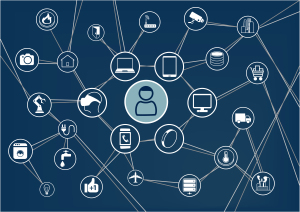Internet of Things: How Telecoms Can Adjust to Meet New Data Realities
 The rapid development of the Internet of Things (IoT) has left many companies scrambling, trying to adapt to the explosive volumes of data that just weren’t predicted (or even imagined) 5-10 years ago. Infrastructures that were designed with maximum anticipated load usage back then simply aren’t prepared to meet growing IoT demands.
The rapid development of the Internet of Things (IoT) has left many companies scrambling, trying to adapt to the explosive volumes of data that just weren’t predicted (or even imagined) 5-10 years ago. Infrastructures that were designed with maximum anticipated load usage back then simply aren’t prepared to meet growing IoT demands.
In fact, many experts now speculate that by the year 2020 there will be more than 50 million connected devices forming the Internet of Things. And although that amount may seem staggering, with constant innovation taking place in the form of wearable mobile technology and smart everything—from cars to coffee pots—that number may end up looking like a mere drop in the ocean.
This situation is especially relevant for network operators in the telecom industry. Surging amounts of data coming in and the various new ways that business users need to analyze and access that information is placing a huge strain on systems. And typically, call centers are valiantly trying to cope with massive CDRs (call data records) from increased device connectivity and usage requirements.
Advantages of Adaptation
A major advantage to the Internet of Things is the capacity to analyze vast quantities of data in relation to patterns and other actionable information. However, this necessitates being able to store huge volumes of historical data for lengthy times frames.
And if database infrastructure and analytics are adapted appropriately, the competitive advantages include a host of customer service improvements such as:
- The inclusion of value-added and customized services through enhanced analytics
- Isolating patterns in archived CDRs to identify service issues and allow alterations in network configurations designed to eliminate them
- Identifying the similarities in usage patterns and service tickets to develop new offers and targeted marketing plans
Strategies for Adaptation
Adapting to the sheer volume of data engendered by the Internet of Things involves strategic planning. Employing innovative approaches to data analytical infrastructure design will help to position telecoms, and their service providers, with the flexibility necessary to meet current and upcoming IoT challenges.
A traditional approach would involve investing in a monolithic relational database, but this type of solution is little more than a temporary fix. Specialized technologies such as cloud-based ad-hoc analytics and real-time investigative database structures (like RAID) offer functional solutions for the hefty network loads present with the IoT. Being able to mine large quantities of records quickly and efficiently will allow operators to identify and react to network issues swiftly, as well as troubleshoot possible situations on an ad-hoc basis.
Possible network issues include:
- Problems with various factors captured in call records such as voice, video, or data transmissions
- Performance functionality of certain device types, operating systems, browsers, or applications
- Communication technology, i.e 4G, LTE
Thinking about database infrastructure and analytics in new ways will help telecoms adapt to the incredible opportunities created by the Internet of Things.
VoIP vs PBX: The Benefits and Disadvantages
 With more available options for communications, many businesses are looking at what service they should use for their telephone line: a more traditional Private Branch Exchange (PBX) or the newer Voice over IP (VoIP).
With more available options for communications, many businesses are looking at what service they should use for their telephone line: a more traditional Private Branch Exchange (PBX) or the newer Voice over IP (VoIP).
Both services have their advantages and disadvantages, including cost and reliability. PBX may be an easier option for internal employees, because it allows businesses to connect all their internal phone lines to a single leased external phone line. In most cases, this means that employees would only need to dial an extension number rather than dialing the full number to call a coworker.
VoIP, on the other hand, uses the Internet to make phone calls by transferring audio information as digital data. It possesses many of the same benefits as a PBX, but it has a lower cost. However, there are also some disadvantages to a VoIP system, leading some businesses to consider an IP PBX system, a combination of the two.
Cost
For large businesses or those that are geographically dispersed, cost may be the single biggest factor in whether to choose PBX or VoIP.
Using a PBX system comes with a monthly charge that can fluctuate depending on how many phone calls are made. In addition, whether or not these calls are made internationally can increase the price. However, VoIP systems use the company’s broadband connection to place phone calls, meaning that the majority of the calls are free no matter where in the world the person is calling. Another benefit of VoIP is a low initial cost; instead of an entirely new system, businesses only need to purchase phone adapters that will change their system from analogue to digital.
Reliability
While cost is lower for VoIP, its reliability can sometimes come into question when compared with a PBX system. Because VoIP relies on the company’s Internet connection, loss of power or connection means that phones will also be unavailable. In contrast, PBX systems are powered by the telephone wire itself and will still work even if the power is out. Some businesses are looking into an IP PBX system for this reason: The ease and cost of a VoIP system with a few PBX lines is ideal for emergencies.
Quality
The company’s Internet connection will also affect the quality of phone calls made over VoIP. Small companies with slow or low-capacity Internet will find that voice quality is lower than with PBX. Fortunately, there are many features in a VoIP system—such as the ability to access a work phone number no matter a person’s physical location—that will encourage businesses to upgrade to a more robust Internet connection.
IT professionals and business leaders should have a good understanding of the pros and cons of VoIP and PBX before deciding which one to purchase. While cost is lower for VoIP, PBX has the advantage in reliability and will still work even without power or an Internet connection. However, with the speed with which today’s digital world moves, businesses may find that VoIP allows them the mobility to keep up – with PBX lines as a backup.
